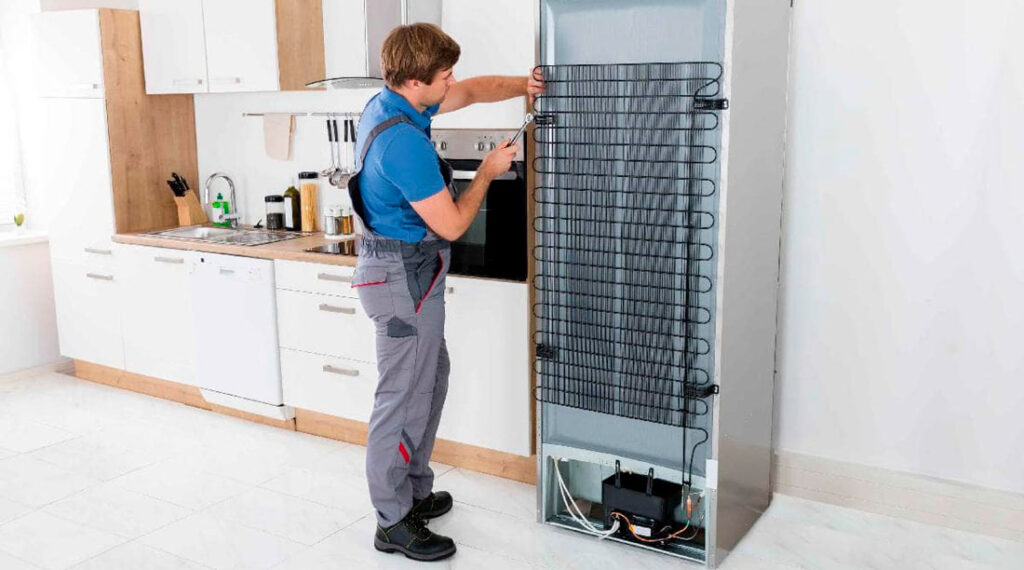
It’s always bad when expensive appliances break down, especially important ones like the refrigerator or freezer. This creates a lot of inconvenience, and you have to spend money on repairs. But when the refrigerator does not freeze, you should not immediately start to worry, because not in all cases the breakdown is complicated. Quite often you can fix it yourself.
All models of refrigerators have breakdowns of a typical nature, which means that they have specific signs. In some cases (but not always) it is possible to diagnose and repair them yourself.
Causes
It is necessary to know the peculiarities of the main malfunctions. This way you can decide whether to repair it yourself or ask for help from a specialist.
The cord has been pulled
Before you call a specialist for refrigerator repair, you should check whether the device is connected to the power grid, whether the power indicator light is on. It may turn out that there is no problem, and your two-chamber friend works properly – you only need to plug it in.
The door is not closed
Even the smallest gap between the door seal and the cabinet will significantly reduce the performance of the refrigerator. Make sure that the door is tight.
The gasket is torn or blistered
If the rubber gasket is torn, you will have to buy a new one. Try to find the original part. If the gasket has become too stiff (from old age or certain household chemicals), you do not have to replace it right away. You can try to restore elasticity with the help of improvised means. The methods are easy to perform and cheap.
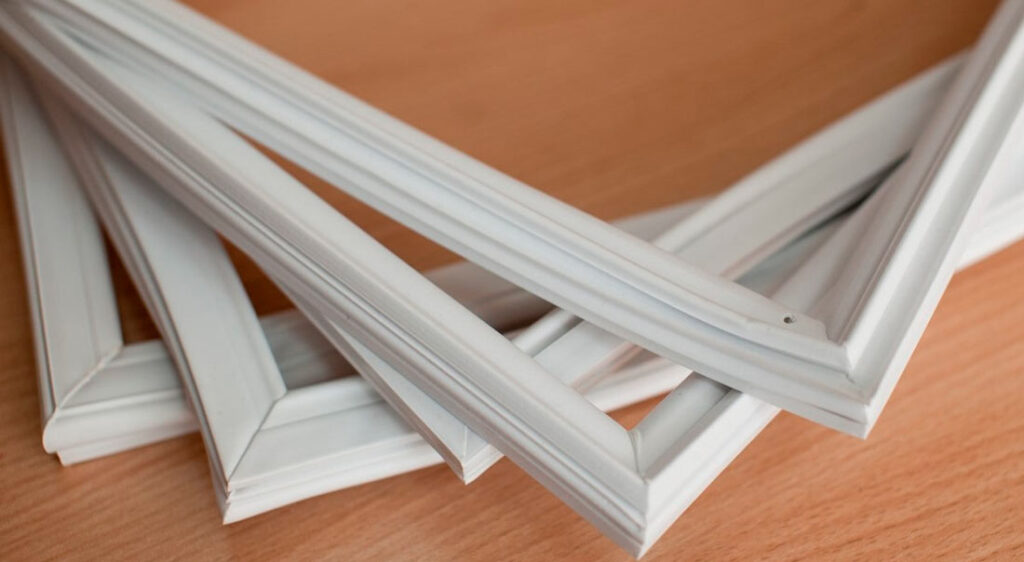
The first thing to do is to remove the rubber band:
- Today, the seal is usually fixed with foam, glue, or is driven into a special groove. Dismantling in this case does not cause much difficulty.
- In older models, however, the rubber is mounted on nails or rivets. When removing it, you need to act carefully so as not to damage the element.
To restore elasticity, you will need to boil several liters of water and scald the rubber.
Leave the sealant in the hot liquid until it has cooled completely. Often this procedure will help the rubber regain the properties lost over time.
Defrost mode is on
Sometimes you may not notice or may simply forget that your refrigerator is in defrost mode. You should simply switch it to cooling mode.
The temperature is set high
In summer, on a hot day, the sun’s rays may cause the temperature in the upper plus chamber to rise. The thermostat should be adjusted for normal operation in response to changes in external factors.
It is undesirable to set it to maximum during hot weather, as the compressor may malfunction.
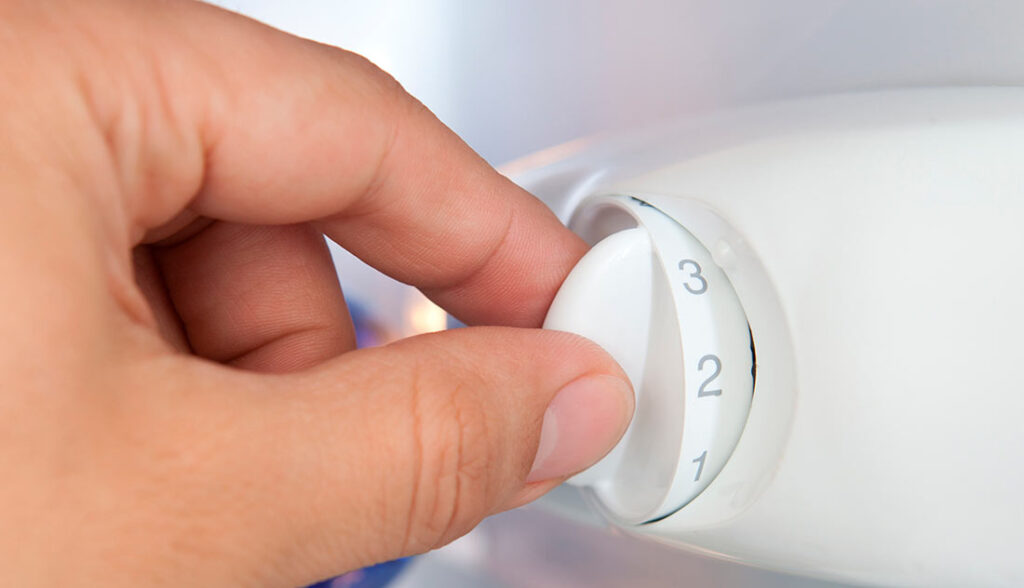
The temperature sensor is broken
Often if a modern refrigerator doesn’t freeze, the temperature sensor is glitchy. Because of the transmission of incorrect readings to the “electronic brain,” the system does not give a signal to turn on the compressor. A new one is inexpensive, but the service life directly depends on the quality of the sensor.
In older equipment, the so-called thermostat (thermostat) fails.
The compressor motor has burned out or overheated
You can tell that the compressor motor has failed by the following signs:
- When you open the door, the light comes on, but the refrigerator itself does not work and does not cool the food.
- The motor turns on and shuts off almost immediately. You can hear the click of a relay before it turns off (more about the strange sounds). The light is on, but none of the chambers freeze.
- The electric motor hums, but there is no cooling.
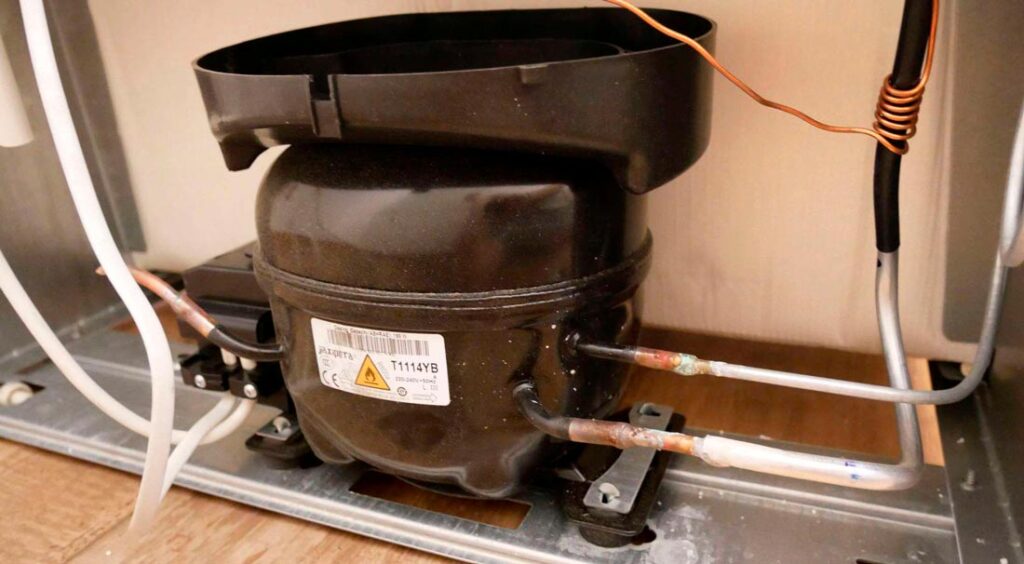
When this breakdown, you need to replace the element.
If the compressor overheats, the refrigerator may not freeze either. The cause is usually the failure of the starter relay. A specialist should be contacted for repairs.
The fan is frozen
This problem can occur with devices equipped with the No Frost system.
- If the fan in the device is frozen, the temperature mode of the entire cooling system is disturbed. It happens very rarely, full defrosting will help.
- The fan runs continuously, making a characteristic buzzing sound. The system is unable to cool the chambers to the desired temperature due to ice frozen in the air passages. To solve the problem, you need to defrost the refrigerator within 12 hours.
Freon leakage
To repair it, locate the leak, repair it, change the filter drier, and refill the cooling system with freon.
In single-compressor models, cooling gas leakage can be signaled by the following signs:
- After defrosting, the light inside the chamber lights up, but the refrigerator does not freeze or turn on.
- The compressor runs continuously, but the unit does not cool well.
- After defrosting, the unit runs for a while, but then shuts down and won’t turn on.
In two-compressor models, the signs of leakage are the same, but refer to only one compartment: the top or the freezer.
It usually occurs in the evaporator, the solder points of the tubes and in the heating circuit.
Electronic unit glitches
When a control unit malfunctions, the refrigerator may behave unpredictably or not work at all. The temperature in the different chambers will jump. The device may turn on for only a few seconds and then turn off again.
In modern models, a breakdown is accompanied by light (flashing or red LED) or sound signals, which alert you to an increase in temperature.
The ones with a display give a text message with an error on the LCD screen.
The most common cause is moisture. This usually happens during defrosting. The control module will need to be repaired or replaced as a complete unit.
Non-functional defrosting heating element
Sometimes, if the refrigerator does not freeze, the heat-extraction air cavities get clogged with ice. This happens when the heating element responsible for defrosting the ice in these cavities burns out.
To diagnose the problem, it is necessary to defrost the chambers and then check the operation of the heating element. It is a universal element that helps defrost ice and snow cover.
Evaporator damage
With the evaporator (radiator on the back wall) there can be these problems:
- Oil clogging. To fix the problem, you need to solder the system where the compressor and capillary tube connects. The evaporator, capillary tube and suction tube are flushed with liquid refrigerant.
- Freon leakage. Evaporator needs to be replaced.
- Refrigerator runs continuously (does not turn off temporarily). This indicates no contact between evaporator suction tube and thermostat siphon tube.
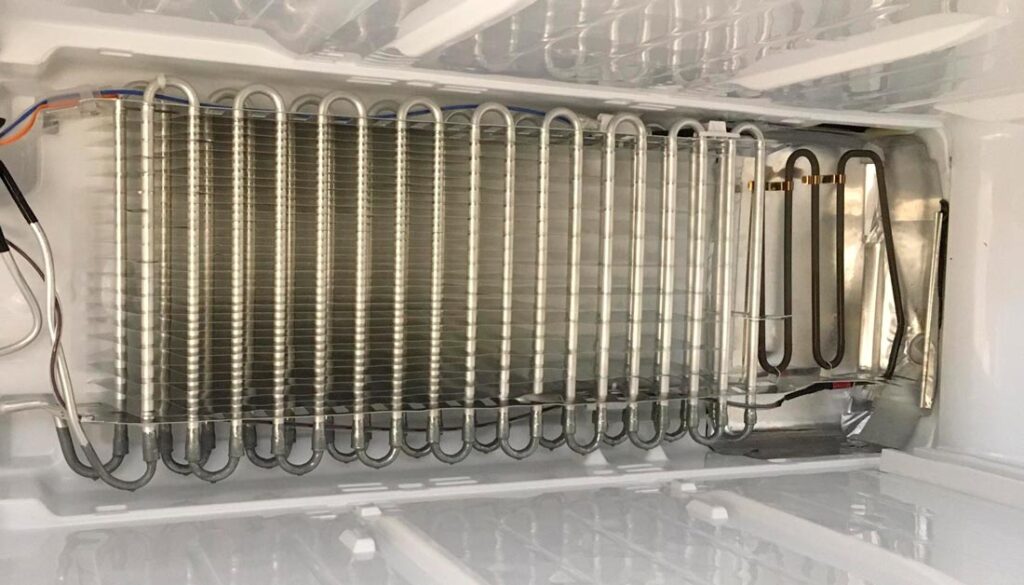
Capillary tube is clogged
A clogged capillary tube is a fairly common problem with older models of refrigerators. The circuit is the most vulnerable place of the whole device.
It is very difficult to repair at home, but it is still possible.
To begin with, you need to have all the necessary tools, equipment for charging freon and refrigerant. If you don’t have all this, you need to go to a refrigerator repair service.
There are several schemes for do-it-yourself repairs:
- Do not clean, but cut out the clogged part of the circuit. The cut is made about 0.7 inches from where the freon enters the capillary. This method of repair is not suitable in cases where the clog is much further away.
- Clean the tube with compressed nitrogen. It must be injected in the opposite direction from the freon flow. A blowdown press is needed for the repair.
- If purging did not help, dismantle the evaporator, heat it in hot water and repeat the procedure.
- Cut off the tube from the filter. A copper tube with a 0.2 inch inside diameter is soldered to the cut off side. The pressure gauge on the hose is connected to it, and then the entire structure is attached to the discharge outlet. About 0.02 pint of solvent must be poured into the hose before performing the last action. The motor is turned on until it reaches 25 atmospheres, and then it is turned off. If the clog remains, the procedure is repeated. In some cases, up to 30 cycles are required.
If the above methods do not work, the capillary system will have to be replaced.
Oxidation and rust inside and outside important modules
Due to improperly performed repairs, moisture enters the hermetically sealed system and corrosion destroys the walls of the tubes, micro-holes appear through which the refrigerant enters the environment. Gradually the temperature increases in the freezer compartment. Only re-soldering the damaged sections to new ones will help here.
If you don’t pay attention to the problem in time, the compressor will break down due to constant operation.
On the outside, rust spots can be removed with rust converters. These can be found in specialized stores. You can also use 9% vinegar instead of the product.
Mechanical and chemical damage
The hull can have holes and cracks in it. Such damage usually occurs during improper transport in case of moving.
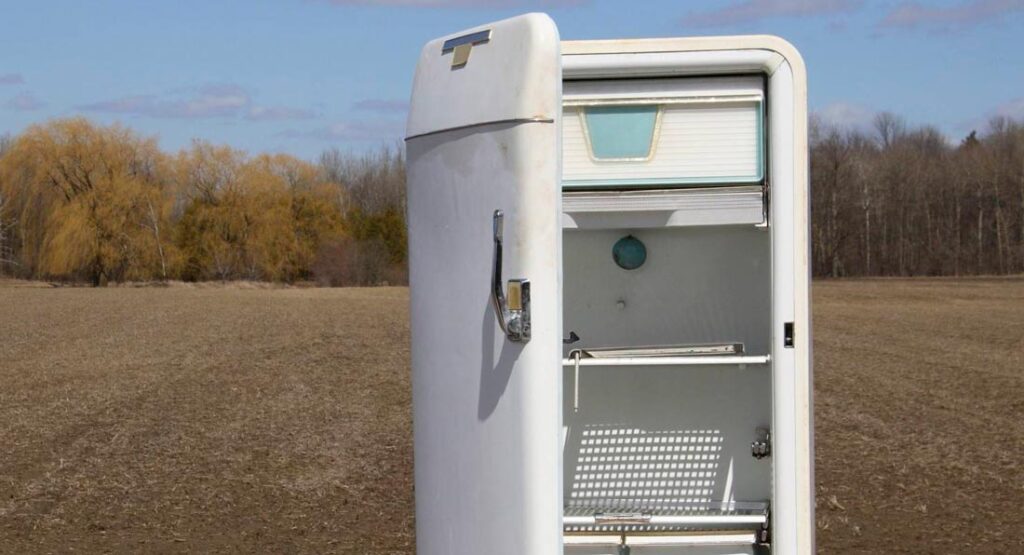
Warm air enters the refrigerating chamber through the holes. The temperature does not reach the desired level, causing the compressor to run constantly, but cannot cool the chambers.
Small cracks can be repaired on your own. The unit must be defrosted and dried. The damaged place is cut out and filled with new insulating material, such as pieces of foam plastic. You can fix the pieces with installation foam, cutting off the excess after curing.
Keep in mind that there are areas with an increased likelihood of cracking. These are the locations of all fasteners, such as doors. Over-tightening the bolts can lead to breakages.
Chemical damage is usually caused by washing. Aggressive chemicals should not be used. If the enamel layer is damaged on the outside, it must be repaired to prevent rust from spreading.
If the No Frost system is installed
Almost all of the difficulties described above apply to models with the No Frost system as well.
Among them:
- Freon leakage.
- Compressor breakdown.
- Thermostat malfunction.
- Failure of heating element.
- Frozen fan.
- Malfunction of control unit.
To avoid damaging anything else, it is advisable to contact a specialist. Self-repair should only be attempted if you have at least a basic knowledge in this area.
Conclusion
Modern refrigerators are quite reliable devices, but still sometimes the equipment stops freezing for no apparent reason. To reduce the likelihood of their occurrence, it is necessary to use the technique in accordance with the instructions.
If signs of failure are detected, you should try to determine the cause and eliminate it yourself to save your money. In some cases, only warranty repair in a specialized service or calling a specialist for refrigerator repair at home will help. I advise you to use Brooklyn refrigerator repair services.
